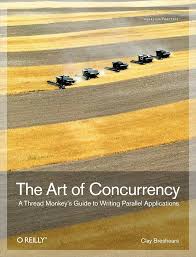The Art of Concurrency: A Comprehensive White Paper
Introduction
Concurrency, the ability to execute multiple tasks simultaneously or in an overlapping fashion, is a fundamental concept in modern computing. As systems become increasingly complex and resource-intensive, the need for efficient and effective concurrency mechanisms becomes paramount. This white paper aims to explore the intricacies of concurrency, delve into various approaches and techniques, and provide practical guidance for developers and architects.
Understanding Concurrency
Definition and Benefits:
Concurrency is the ability of a system to perform multiple tasks simultaneously or appear to do so. It offers several advantages, including:
- Improved Performance: By utilizing multiple cores or processors, concurrent execution can significantly enhance system performance.
- Increased Responsiveness: Concurrent tasks can prevent the user interface from freezing while long-running operations are executed.
- Enhanced Resource Utilization: Concurrency allows for better utilization of system resources, such as CPU, memory, and I/O.
Challenges and Considerations:
Implementing concurrency can introduce complexities, including:
- Race Conditions: When the order of execution of multiple threads can affect the outcome of a program.
- Deadlocks: When two or more threads are waiting for each other to release resources, resulting in a deadlock.
- Livelocks: When threads are constantly changing their state in response to each other's actions, preventing progress.
Concurrency Approaches
1. Multithreading:
- Process vs. Thread: A process is a self-contained execution environment, while a thread is a lightweight unit of execution within a process.
- Thread Creation and Management: Discuss the mechanisms for creating, managing, and synchronizing threads.
- Thread Safety: Explore techniques to ensure that shared data is accessed and modified in a thread-safe manner.
2. Multiprocessing:
- Process Creation and Communication: Explain how multiple processes can be created and communicate with each other using techniques like inter-process communication (IPC).
- Benefits and Drawbacks: Discuss the advantages and disadvantages of multiprocessing compared to multithreading.
3. Asynchronous Programming:
- Callbacks and Promises: Introduce the concepts of callbacks and promises for handling asynchronous operations.
- Event-Driven Architecture: Explain how asynchronous programming can be used to create event-driven systems.
- Advantages and Challenges: Discuss the benefits and potential drawbacks of asynchronous programming.
Concurrency Control and Synchronization
1. Locks and Mutexes:
- Mutual Exclusion: Explain how locks and mutexes are used to ensure that only one thread can access a shared resource at a time.
- Deadlock Prevention: Discuss techniques to avoid deadlocks, such as using timeouts or ordering resources.
2. Semaphores:
- Counting Semaphores: Explain how counting semaphores can be used to control access to a limited number of resources.
- Binary Semaphores: Discuss the use of binary semaphores for mutual exclusion.
3. Monitors:
- Condition Variables: Explain how condition variables can be used within monitors to wait for specific conditions to be met.
- Advantages of Monitors: Discuss the benefits of using monitors for concurrency control.
Concurrency Patterns and Best Practices
- Producer-Consumer Pattern: Describe how this pattern can be used to coordinate the flow of data between producer and consumer threads.
- Reader-Writer Lock: Explain how this lock can be used to allow multiple readers to access a shared resource concurrently, but only one writer at a time.
- Thread Pool: Discuss the advantages of using thread pools to manage the creation and reuse of threads.
- Avoiding Concurrency Bugs: Provide guidelines for writing concurrent code that is free from race conditions, deadlocks, and livelocks.
Case Studies and Real-World Applications
- Web Servers: Explore how concurrency is used in web servers to handle multiple client requests simultaneously.
- Database Systems: Discuss the concurrency control mechanisms employed in database systems to ensure data integrity.
- Parallel Computing: Examine how concurrency is leveraged in parallel computing applications to solve complex problems.
Conclusion
Concurrency is a fundamental aspect of modern computing, enabling systems to improve performance, responsiveness, and resource utilization. By understanding the various approaches, techniques, and best practices, developers and architects can effectively design and implement concurrent systems that are both efficient and reliable.
References
- Operating Systems: Principles and Practice by Abraham Silberschatz, Peter Baer Galvin, and Greg Gagne
- Concurrency in Practice by Brian Goetz, Tim Peierls, Joshua Bloch, Joseph Bowbeer, David Holmes, and Doug Lea
- The Art of Concurrency by Raymond N. Ng
- Java Concurrency in Practice by Brian Goetz, Tim Peierls, Joshua Bloch, Joseph Bowbeer, David Holmes, and Doug Lea
- C++ Concurrency in Action by Anthony Williams
- Python Concurrency Cookbook by David Beazley and Brian Jones
Note: This white paper provides a general overview of concurrency. For more in-depth information and specific examples, please refer to the recommended references. Contact ias-research.com for details.



